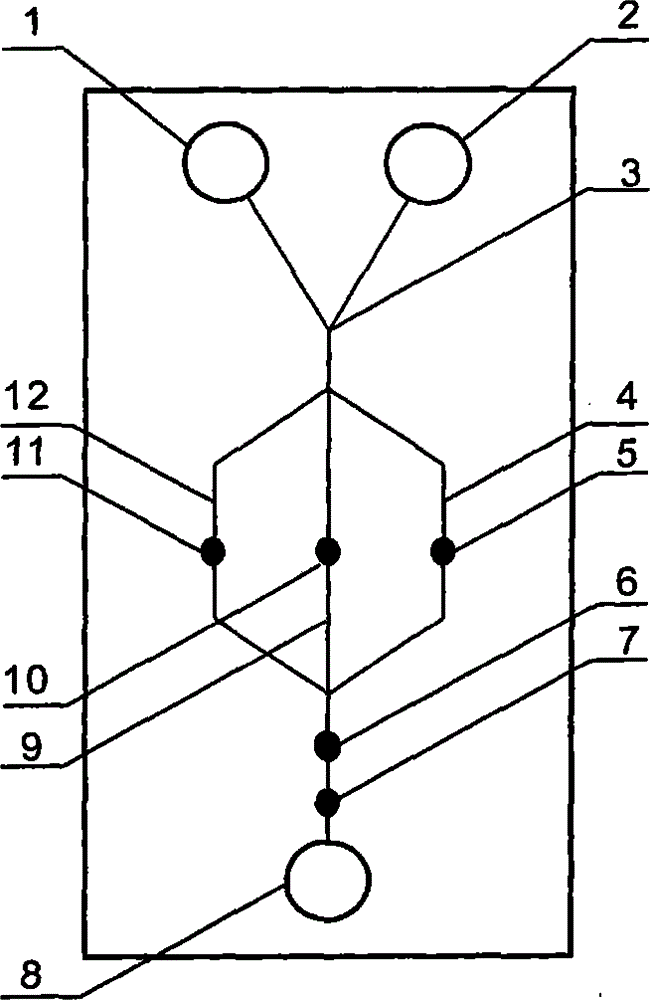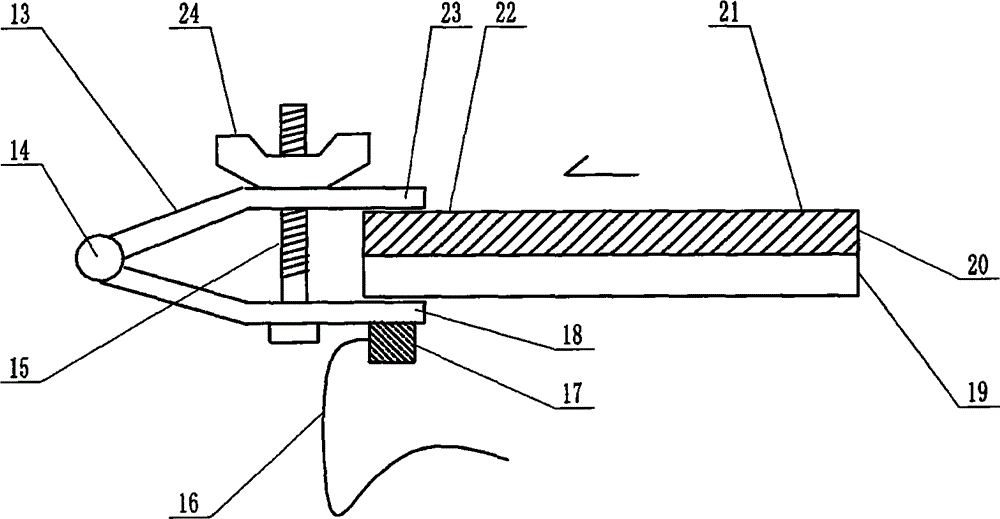Chip device adopting PDMS as substrate material for subtype swine flu detection
A swine flu and microfluidic chip technology, applied in the field of analysis and testing, can solve the problems of troublesome operation, large flow resistance, and unsolved problems in the inner surface modification of PDMS microchannels.
- Summary
- Abstract
- Description
- Claims
- Application Information
AI Technical Summary
Problems solved by technology
Method used
Image
Examples
Embodiment Construction
[0054] exist figure 1 and figure 2 In the shown embodiment of the present case, the structure of the device includes a multi-channel microfluidic chip, and the structure of the microfluidic chip includes a substrate 20 and a cover sheet 19 that are attached to each other and installed together. The substrate 20 and the cover sheet 19 are plates or sheets, the surface of the substrate 20 facing the cover sheet 19 contains a groove structure formed by a molding process or an etching process, and the substrate 20 also contains a channel structure that is connected to the groove The window structure is connected to the channel structure and penetrates the substrate 20 through a molding process, an etching process or a simple punching process, and the substrate 20 and the cover sheet 19 are installed together to form a structure containing a channel. And the microfluidic chip of the liquid pool structure connected to it, the structural position of the pipeline is located in the i...
PUM
| Property | Measurement | Unit |
|---|---|---|
| diameter | aaaaa | aaaaa |
| length | aaaaa | aaaaa |
| thickness | aaaaa | aaaaa |
Abstract
Description
Claims
Application Information
 Login to View More
Login to View More - R&D
- Intellectual Property
- Life Sciences
- Materials
- Tech Scout
- Unparalleled Data Quality
- Higher Quality Content
- 60% Fewer Hallucinations
Browse by: Latest US Patents, China's latest patents, Technical Efficacy Thesaurus, Application Domain, Technology Topic, Popular Technical Reports.
© 2025 PatSnap. All rights reserved.Legal|Privacy policy|Modern Slavery Act Transparency Statement|Sitemap|About US| Contact US: help@patsnap.com


